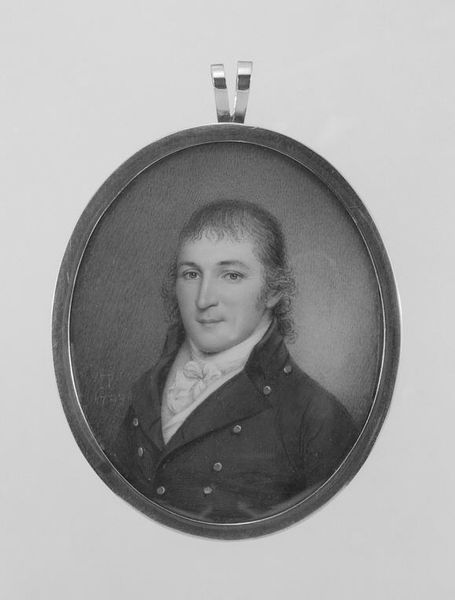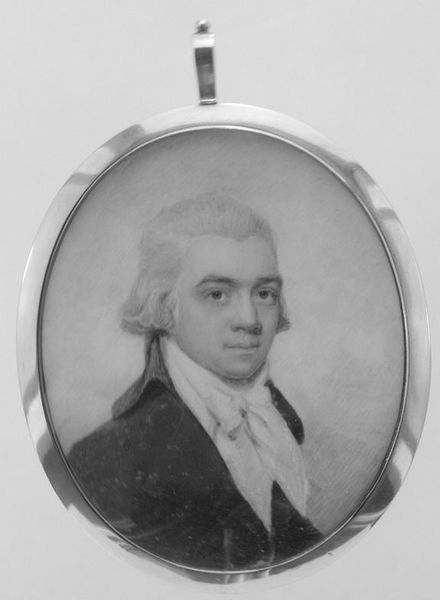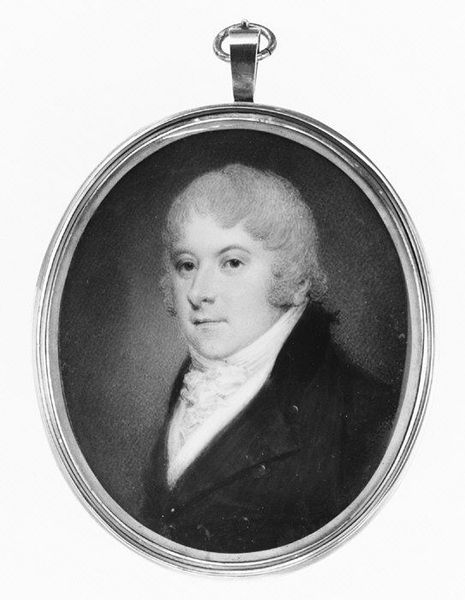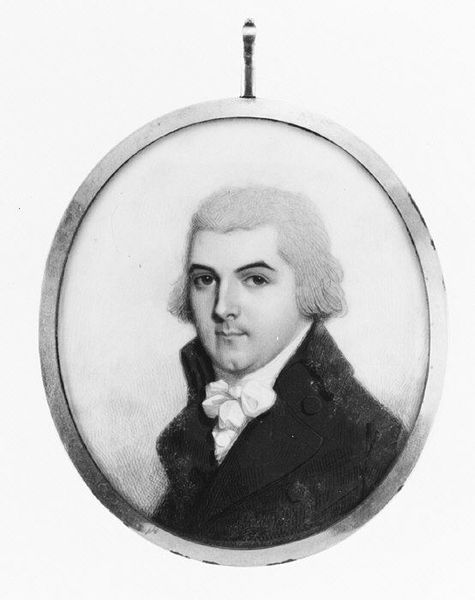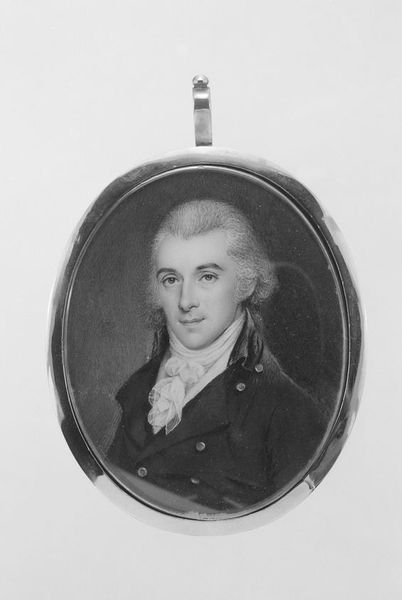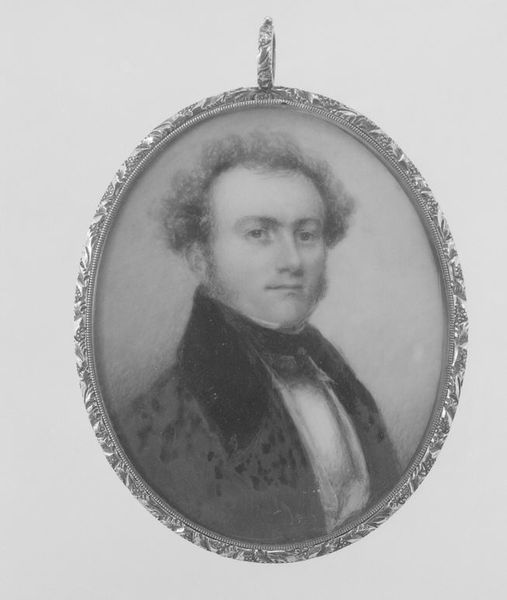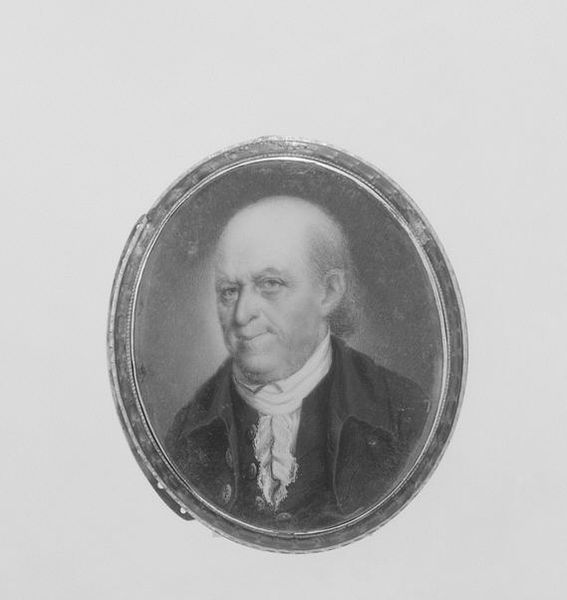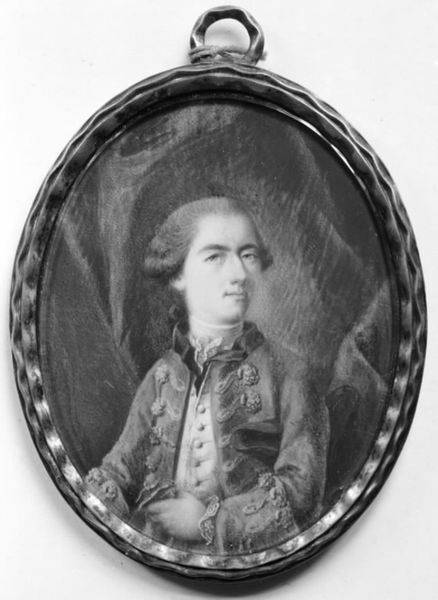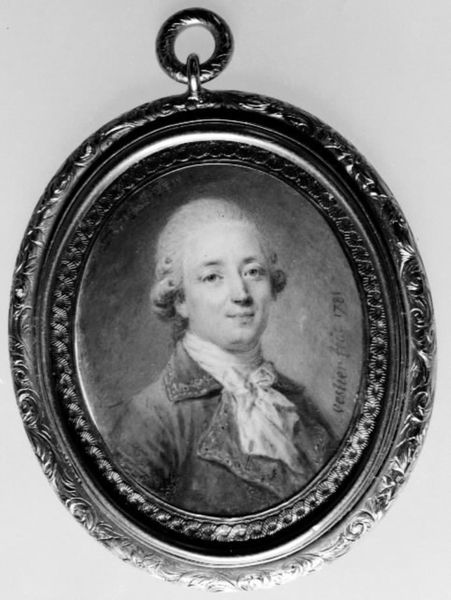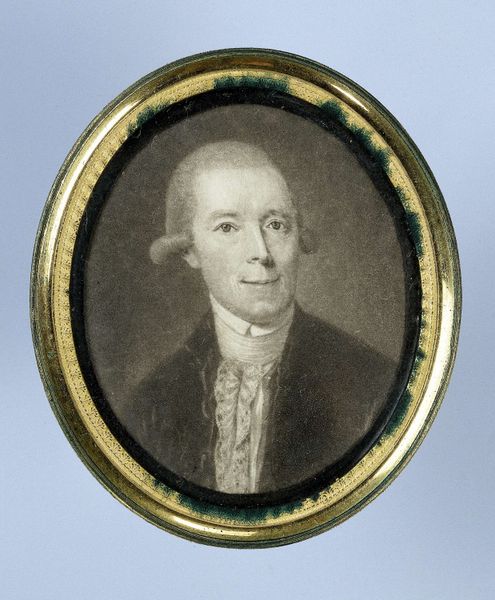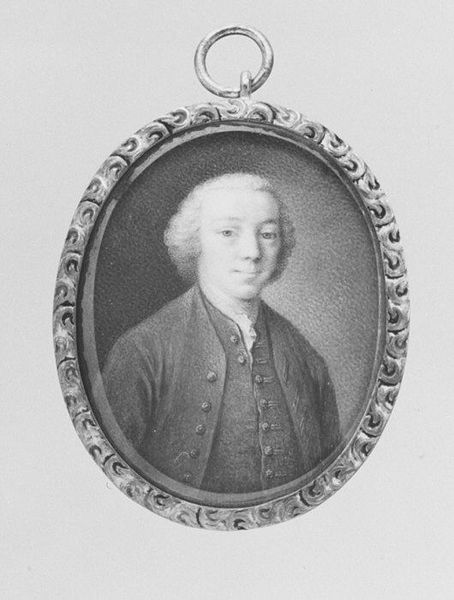
drawing, pencil
#
portrait
#
drawing
#
sculpture
#
black and white theme
#
framed image
#
black and white
#
pencil
#
men
#
miniature
Dimensions: 1 5/8 x 1 1/4 in. (4.1 x 3.1 cm)
Copyright: Public Domain
Curator: Here we have "Frederick Kuhl," a pencil drawing created sometime between 1790 and 1800 by William Verstille. It's currently held here at the Metropolitan Museum of Art. Editor: It’s striking. Something about the oval frame and monochrome palette makes it feel intimate, like a locket holding a secret. Curator: Precisely. The miniature portrait became popular as keepsakes amongst the rising merchant class in the late 18th century, offering a personal connection amidst burgeoning societal changes. Editor: I am intrigued by the figure's gaze. His eyes seem both direct and slightly melancholic, carrying echoes of revolutionary fervor but also of its potential disappointments. There’s almost a Roman virtue communicated by such a small token. Curator: These portraits operated in a specific social ecosystem. Verstille was meeting the demand for individualized representation, allowing individuals like Kuhl to project a desired image. We must consider the cultural capital at play here – demonstrating sophistication and wealth, participating in the artistic trends of the era. Editor: Note his neatly powdered hair and carefully buttoned coat, symbols of status, but observe how Verstille's artistic skill softens those symbols, revealing something of the man beneath. Perhaps an aspiring sensibility is showing us a glimpse into inner complexities rather than just public display. Curator: I see your point. While Verstille undeniably captured individual likeness, he was equally mindful of communicating status. However, you can read the shift toward less formal aristocratic portraits and see this more in the emerging identity politics. Editor: So, we can see the portrait as reflecting both individual sentiment and societal positioning within the currents of a society undergoing great change, mirroring the personal in the public sphere, but both conveyed through these long-standing and subtle clues. Curator: It highlights how the democratization of art forms intersects with enduring themes of self-representation and societal standing. These miniatures offered entry points for social participation for groups and people excluded from full representation by official institutions. Editor: Absolutely. Examining art through the lens of individual and collective history unveils a compelling tale of personal and political meaning through potent emblems.
Comments
No comments
Be the first to comment and join the conversation on the ultimate creative platform.
